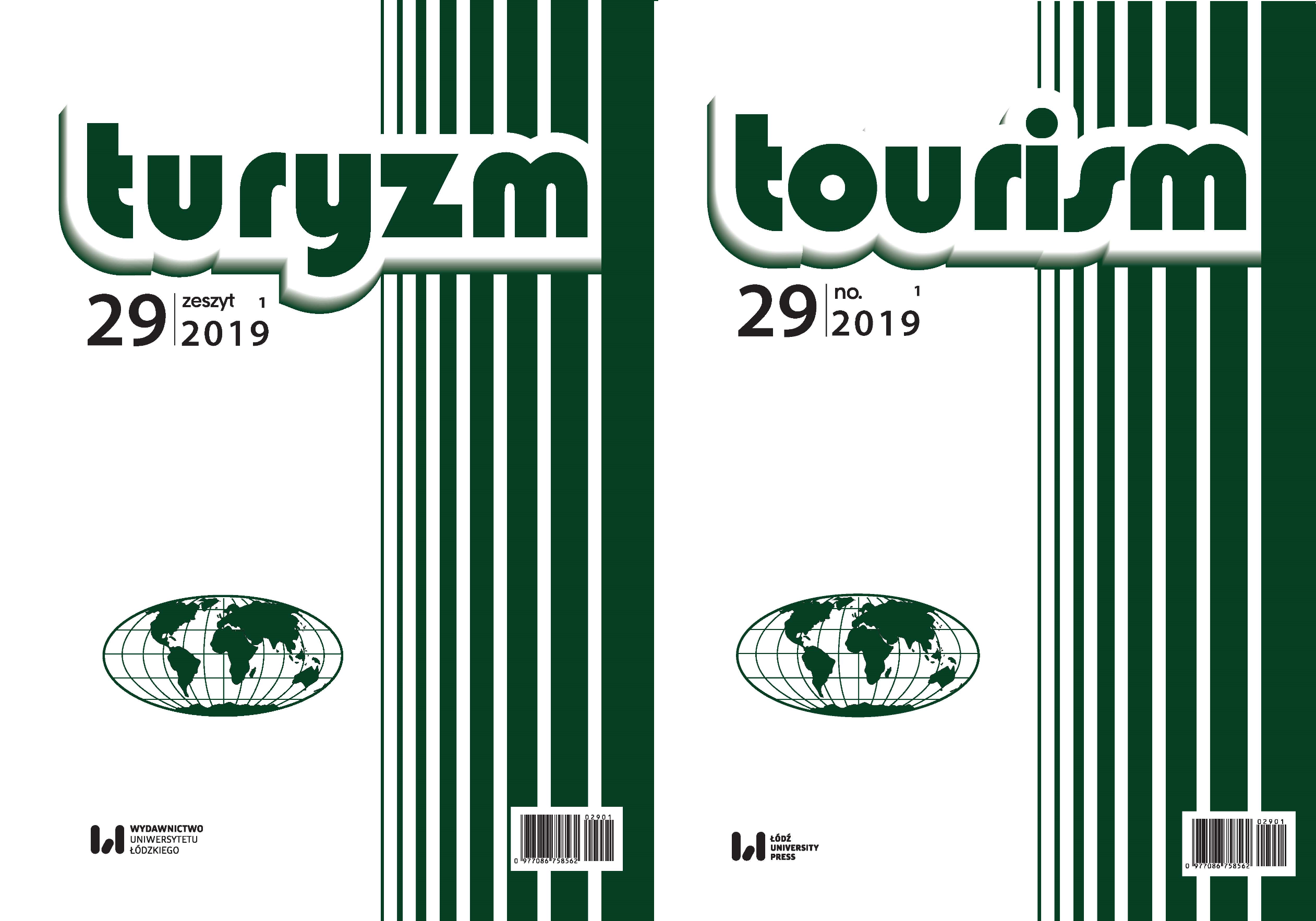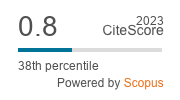The ‘dissonant’ heritage of Nowa Huta’s shelters: Between education and entertainment
DOI:
https://doi.org/10.2478/tour-2019-0001Keywords:
Heritage, tourism, education, Nowa Huta, shaltersAbstract
The following article attempts to show how the heritage space of Nowa Huta undergoes gradual transformation under the influence of tourism. An example, which is going to be examined, is a new tourist route presenting the heritage of shelters at Nowa Huta. The context for this discussion is the concept of edutainment, which is a form of education through entertainment. It will be discussed that the inclusion of entertainment elements in the process of dissonant heritage interpretation, is a solution that facilitates noticing ambivalences resulting from the complex nature of the past, and thus contributes to more profound understanding and opens a space for the acceptance of the heritage.
Downloads
References
Ashworth, G. (2002). Holocaust tourism: The experience of Kraków-Kazimierz. International Research in Geographical and Environmental Education, 11 (4), 363-367.
Google Scholar
Banaszkiewicz, M. (2018). Turystyka w miejscach kłopotliwego dziedzictwa. Kraków: Wydawnictwo Uniwersytetu Jagiellońskiego.
Google Scholar
Bauman, Z. (1996). From pilgrim to tourist − or a short history of identity. In: S. Hall, P. du Gay (eds), Questions of cultural identity (pp. 18-36). London: SAGE Publications.
Google Scholar
Boorstin, D. (1964). The image: A guide to pseudo-events in America. New York: Harper & Row.
Google Scholar
Caulton, T. (2006). Hands-on exhibitions: Managing interactive museums and science centres. London: Routledge.
Google Scholar
Combs, J.E. (2000). Play world: The emergence of the new ludenic age. Westport: Greenwood Publishing Group.
Google Scholar
Dzieszyński, R., Franczyk, J. (2006). Encyklopedia Nowej Huty. Kraków: Wyd. Towwarzystwa Słowaków w Polsce.
Google Scholar
Falk, J.H., Dierking, L.D. (2000). Learning from museums: Visitor experiences and the making of meaning. Plymouth: Rowman & Littlefield.
Google Scholar
Gądecki, J. (2012). I love NH. Gentryfikacja starej części Nowej Huty. Warszawa: Wydawnictwo Instytutu Filozofii i Socjologii Polskiej Akademii Nauk.
Google Scholar
Gaweł, Ł. (2014). Poprzemysłowe dziedzictwo kulturowe a rozwój turystyki. Zastosowanie modelu AUDEE do oceny industrialnych atrakcji turystycznych. Turystyka Kulturowa , 11, 53-67.
Google Scholar
Gaweł, Ł., Kostera, M. (eds) (2018). Etnografie instytucji dziedzictwa kulturowego. Kraków: Wydawnictwo Uniwersytetu Jagiellońskiego.
Google Scholar
Golonka-Czajkowska, M. (2013). Nowe miasto nowych ludzi. Mitologie nowohuckie. Kraków: Wydawnictwo Uniwersytetu Jagiellońskiego.
Google Scholar
Holzer, J. (2012). Europa zimnej wojny. Kraków: Znak.
Google Scholar
Hooper-Greenhill, E. (2007). Museums and education: Purpose, pedagogy, performance. London: Routledge.
Google Scholar
Huizinga, J. (1997). Homo ludens: zabawa jako źródło kultury. Translated by M. Kurecka, W. Wirpsza. Warszawa: Wydawnictwo Aletheia.
Google Scholar
Jagło, P., Lempart, M. (2013). Nowa Huta 1949+. Kraków: Muzeum Historyczne Miasta Krakowa.
Google Scholar
Kantor, R., Paleczny, T., Banaszkiewicz, M. (eds) (2011). Wąż w raju. Zabawa w społeczeństwie konsumpcyjnym. Kraków: Wydawnictwo Uniwersytetu Jagiellońskiego.
Google Scholar
Klaś, J. (2016). Ochrona dziedzictwa kulturowego Nowej Huty − między teorią a praktyką. In: Ł. Gaweł, W. Pokojska, A. Pudełko (eds), Zarządzanie dziedzictwem. Problemy, obszary, definicje (pp. 254-284). Kraków: Wydawnictwo Attyka.
Google Scholar
Klaś, J. (ed.) (2018). Nowa Huta. Architektoniczny portret miasta drugiej połowy XX wieku. Kraków: Ośrodek Kultury im. C.K. Norwida.
Google Scholar
Knudsen, B. (2010). The past as staged-real environment: Communism revisited in the crazy guides communism tours, Kraków, Poland. Journal of Tourism and Cultural Change, 8 (3), 139-153.
Google Scholar
Lebow, K. (2013). Unfinished utopia: Nowa Huta, stalinism, and Polish society, 1949-56. Ithaca–London: Cornell University Press.
Google Scholar
Majewska, E. (2007). Nowa Huta as a utopian project: A sketch on political imagination. In: M. Kaltwasser, E. Majewska, J. Szreder (eds), Futuryzm miast przemysłowych. 100-lecie Nowej Huty i Wolfsburga (pp. 17-25). Kraków: Korporacja Ha!Art.
Google Scholar
Mierzwa, T. (2015). Schrony Terenowej Obrony Przeciwlotniczej w Nowej Hucie. Światowid, 2, 141-160.
Google Scholar
Mierzwa, T., Semik, Z. (2015). Nuclear threat. Shelters in Nowa Huta. Kraków: Muzeum PRL-u.
Google Scholar
Muzeum Historyczne Miasta Krakowa. Retrieved from: https://www.muzeumkrakowa.pl/oddzialy/muzeum-nowej-huty (14.02.2019).
Google Scholar
Muzeum PRL-u. Retrieved from: www.mprl.pl (10.02.2019).
Google Scholar
Nuclear threat. Shelters in Nowa Huta (2015). Retrieved from: http://www.mprl.pl/wystawy/152/nuclear-threat.-sheltersin-nowa-huta..html (14.02.2019).
Google Scholar
Okoń, W. (1995). Zabawa a rzeczywistość. Warszawa: Wyd. ŻAK.
Google Scholar
Paleczny, T., Kantor, R., Banaszkiewicz, M. (eds) (2012). Kultura zabawy. Kraków: Wydawnictwo Uniwersytetu Jagiellońskiego.
Google Scholar
Parry, R. (2013). Museums in a digital age. London: Routledge.
Google Scholar
Pfaffenberger, B. (1983). Serious pilgrims and frivolous tourists: The chimera of tourism in the pilgrimages of Sri Lanka. Annals of Tourism Research, 10 (1), 57-74.
Google Scholar
Pine, J., Gilmore, J. (1999). The experience economy: Work is theatre an every business a stage. Boston: Harvard Business School Press.
Google Scholar
Postman, N. (2000). Amusing ourselves to death: Public discourse in the age of show business. London: Penguin Books.
Google Scholar
Poźniak, K. (2014). Nowa Huta: Generations of change in a socialist model town. Pittsburgh: Pittsburgh University Press.
Google Scholar
Robinson, M., Picard, D. (eds) (2016). Emotion in motion: Tourism, affect and transformation. London: Routledge.
Google Scholar
Salazar, N. (2010). Envisioning eden: Mobilizing imaginaries in tourism and beyond. Oxford: Berghahn Book.
Google Scholar
Salwiński, J., Sibila, L.J. (eds) (2008). Nowa Huta – przeszłość i wizja. Studium muzeum rozproszonego. Kraków: Muzeum Historyczne Miasta Krakowa.
Google Scholar
Selwyn, T. (ed.) (1996). The tourist image: Myths and myth making in tourism. Chichester: John Wiley & Son.
Google Scholar
Smith, L. (2006). Uses of heritage. Oxford: Routledge.
Google Scholar
Smith, M., Hall, D. (2006). Enlargement implications for European tourism. In: D. Hall, M. Smith, B. Marciszewska, Tourism in the new Europe: The challenges and opportunities of EU enlargement (pp. 32-43). Wallingford: CABI.
Google Scholar
Stenning, A., Smith, A., Rochovská, A., Świątek, D. (2010). Domesticating neo-liberalism. Spaces of economic practice and social reproduction in post-socialist cities. Chichester: Wiley-Blackwell.
Google Scholar
Tilden, F. (1957). Interpreting our heritage. Principles and practices for visitor services in parks, museums, and historic places. Chapel Hill: University of North Carolina Press.
Google Scholar
Tunbridge, J.E., Ashworth, G.J. (1996). Dissonant heritage: The management of the past as a resource in conflict. Chichester–New York: Wiley & Son.
Google Scholar
Urry, J., Larsen, J. (2011). The tourist gaze 3.0. London: Routledge.
Google Scholar
Whigham, K. (2014). Performing and future (in) performing a past – Identity, cultural performances and the Utopian impulse. Tourist Studies, 14 (2), 203-224.
Google Scholar
Xie, P.F. (2015). Industrial heritage tourism. Bristol: Channel View Publications.
Google Scholar
Zarzycka, K. (2013). Pełny scenariusz wystawy oraz projekt aranżacji wystawy „Trasa turystyczna po schronach Nowej Huty” w pomieszczeniach budynku przy Osiedlu Szkolnym 22 (obecna biblioteka) wraz ze schronem oraz schronach w budynkach na Osiedlu Szkolnym 9, 37, Osiedlu Krakówiaków 43, realizowanym w ramach projektu „Muzeum PRL − Podziemna Nowa Huta”. Kraków (unpublished material, commissioned by the PRL Museum).
Google Scholar
Downloads
Published
How to Cite
Issue
Section
License

This work is licensed under a Creative Commons Attribution-NonCommercial-NoDerivatives 4.0 International License.










